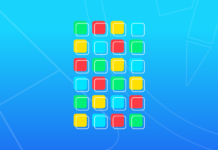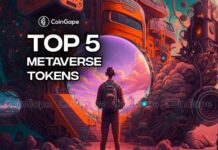Web3 (Also Known as Web 3.0) is the third generation of the internet that uses more advanced technologies. Here we have a list of the most popular Web3 Examples. It is used to build applications that do not require a metaverse, such as OpenSea, a marketplace for buying and selling NFTs, Everledger, a blockchain-based supply chain, and the web3 browsers Brave and Breaker Browser. Decentralized cryptocurrency websites such as Bitcoin, as well as decentralized remote job/freelance platforms such as EthLance and Atlas. Work is also part of Web3.
If you don’t know what is Web3, then Check this Article on What is Web3?
Web3 also includes video and music websites like Livepeer, Viuly, Flixxo, Videocoin, LBRY, and Mirror. Finally, Web3 contains storage websites like Linksup.io and the CoinX template.
Despite its potential benefits, Web3 has been criticized by high-profile individuals such as Elon Musk, who are concerned about its implications for privacy and data ownership. Web3 website examples can be found at web3examples.com.
Web3 Examples:
Brave Browser
Brave Browser is a fast, private, and secure web browser available for PC, Mac, and mobile devices. It has an ad blocker built in to prevent tracking and save data and battery life. Brave also provides a secure multi-chain crypto wallet, as well as an independent private search engine, Brave Search. Brave Browser is compatible with Windows, macOS, Linux, iOS, and Android.
Related: How to Invest in web3?
Decentraland
Decentraland is a browser-based 3D virtual world platform where users can buy and sell virtual plots of land, estates, avatar wearables, and names as Non-Fungible Tokens (NFTs) with the MANA cryptocurrency. The Decentraland Editor is a powerful content creation tool built on Visual Studio Code, and the current MANA to the USD exchange rate is $0.327097 USD, with a 24-hour trading volume of $31,741,625 USD.
Storj
Storj is an open-source cloud storage platform that hosts user data on a decentralized network of nodes. It uses advanced encryption to secure hosted data and has an ERC-20 utility token, STORJ, that is used to exchange value within the Storj ecosystem. Storj Labs offers Data-as-a-Service (DaaS) to businesses and consumers and completed a $30 million initial coin offering (ICO) in 2017. Storage Node Operators are compensated in STORJ tokens rather than US dollars.
Related: Web3 vs Web2
STEPN
STEPN is a Move-to-Earn health and fitness app that encourages people to walk more and spend more time outside. Users who have Sneaker NFT can go outside to earn tokens and NFT rewards. To bridge the gap between crypto and non-crypto users, STEPN includes a wallet, swap, marketplace, and RNPL (Rent Now Pay Later) system. It also includes troubleshooting steps for the app’s most common problems, as well as links, forms, and resources for users.
ySign
ySign is a blockchain-based decentralized messaging app that offers users complete anonymity, privacy, and security. It does not store user data, and all information is only stored on the user’s ID Address. ySign is in the works, and each user will have a unique ID Address. The ySign team has extensive experience in exchange platforms and the IT sector.
Read More: Web3 Ultimate Definition

























































